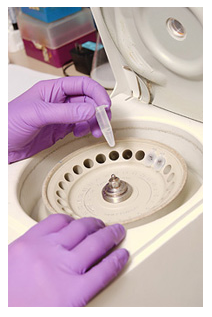Archival Notice
This is an archive page that is no longer being updated. It may contain outdated information and links may no longer function as originally intended.
Home | Glossary | Resources | Help | Contact Us | Course Map
Introduction
The nature of the wide variety of substrates on which forensic biological samples are deposited can create problems for the DNA analyst. For example, the substrate may cause collection problems or it may contain substances that interfere with the Polymerase Chain Reaction (PCR) assay. The main problem is inhibition; the efficiency of amplification of forensic samples is often significantly decreased because of inhibitors present in the sample substrate. Inhibition can result in partial DNA profiles and, in severe instances, false negative reactions.
Even when sample collection and PCR have worked properly, difficulties may arise in the interpretation of samples from multiple donors.
Additional Online Courses
- What Every First Responding Officer Should Know About DNA Evidence
- Collecting DNA Evidence at Property Crime Scenes
- DNA – A Prosecutor’s Practice Notebook
- Crime Scene and DNA Basics
- Laboratory Safety Programs
- DNA Amplification
- Population Genetics and Statistics
- Non-STR DNA Markers: SNPs, Y-STRs, LCN and mtDNA
- Firearms Examiner Training
- Forensic DNA Education for Law Enforcement Decisionmakers
- What Every Investigator and Evidence Technician Should Know About DNA Evidence
- Principles of Forensic DNA for Officers of the Court
- Law 101: Legal Guide for the Forensic Expert
- Laboratory Orientation and Testing of Body Fluids and Tissues
- DNA Extraction and Quantitation
- STR Data Analysis and Interpretation
- Communication Skills, Report Writing, and Courtroom Testimony
- Español for Law Enforcement
- Amplified DNA Product Separation for Forensic Analysts


